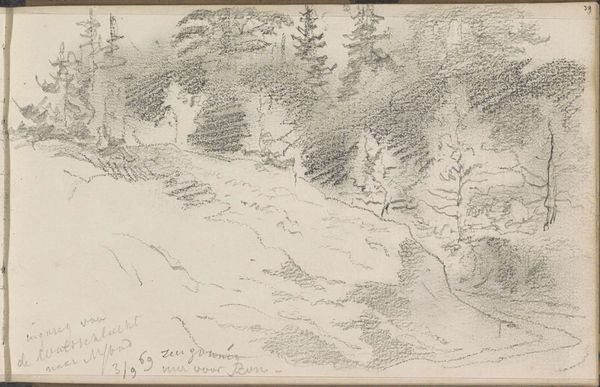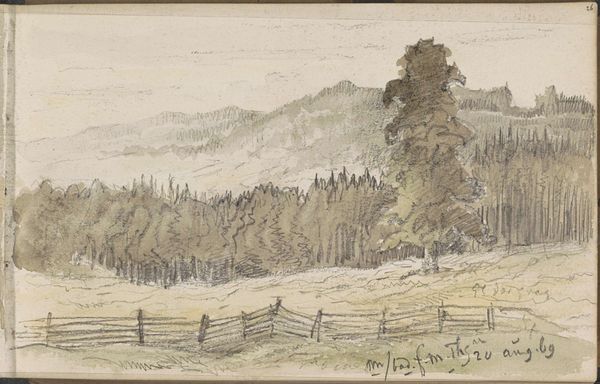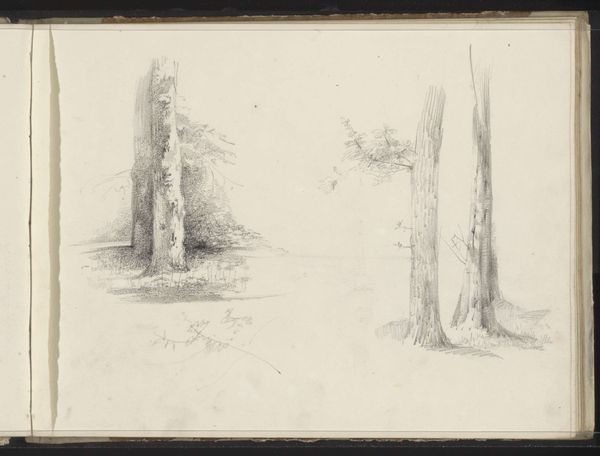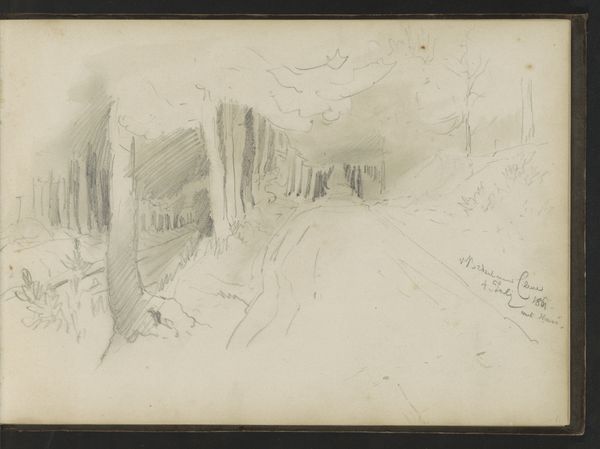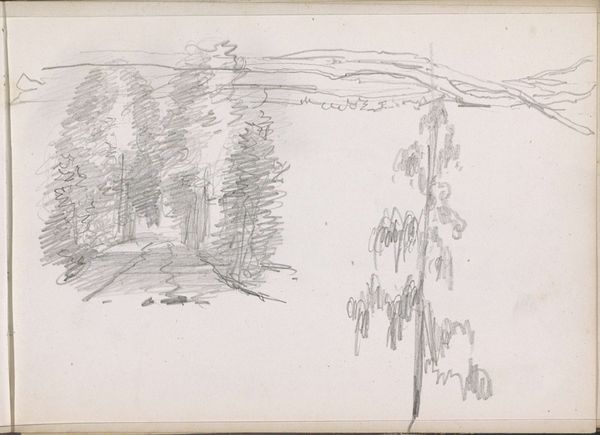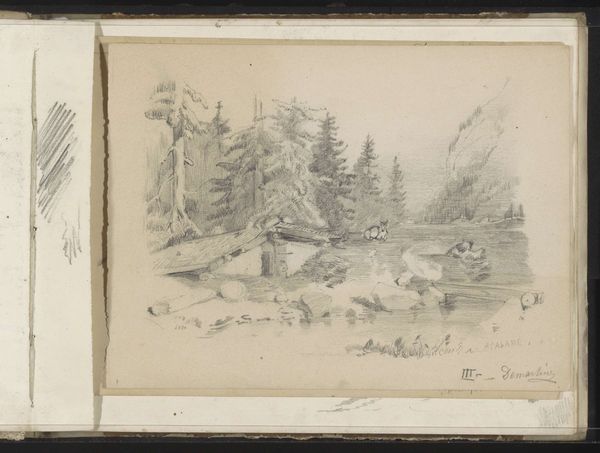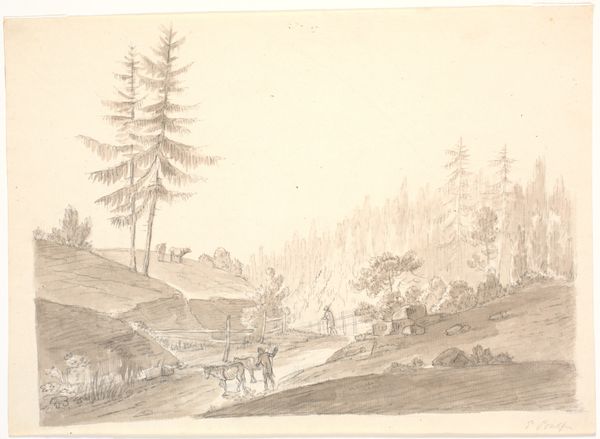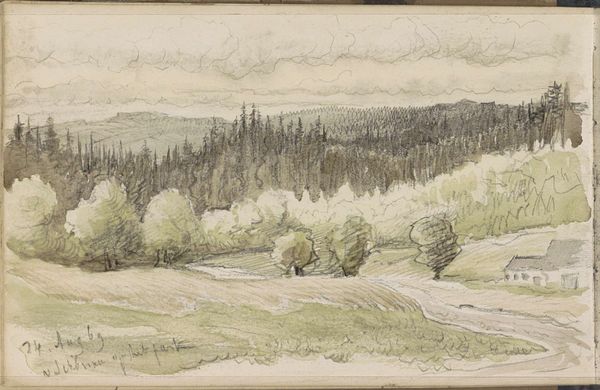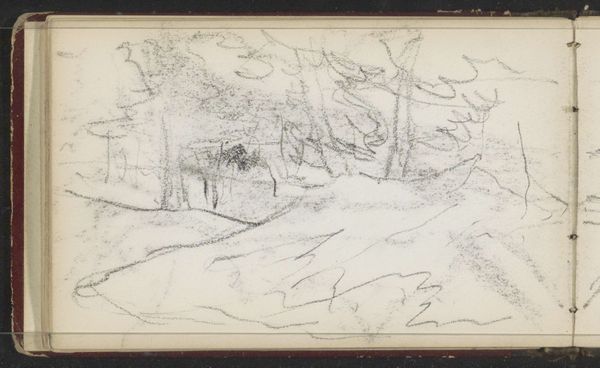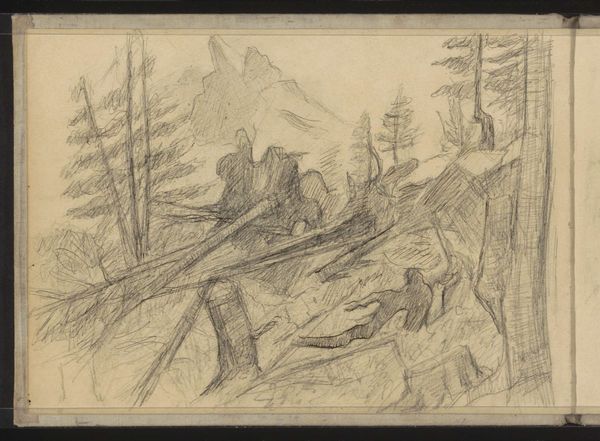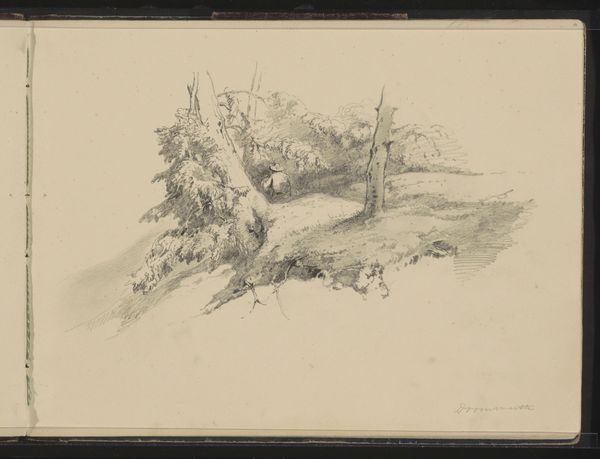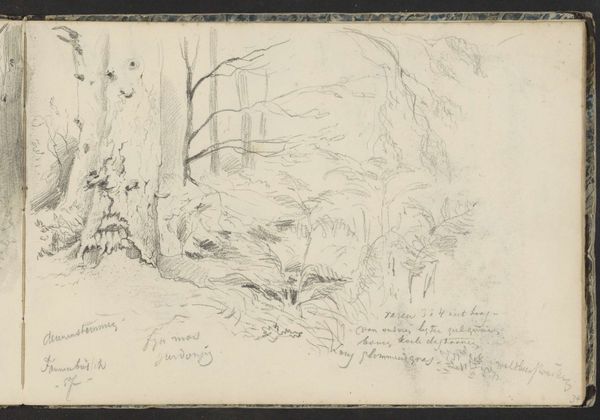
drawing, paper, ink
#
drawing
#
ink drawing
#
ink painting
#
dutch-golden-age
#
landscape
#
paper
#
ink
#
forest
#
watercolour illustration
#
realism
Copyright: Rijks Museum: Open Domain
Johannes Tavenraat sketched this landscape, titled "Diergaarde bij Königswald," in 1858 using graphite. The forest, a place of refuge, teems with symbolic weight. Note the deer, fleeing and free within its depths. Deer, across cultures, often embody innocence and rebirth. But observe how their portrayal shifts: In Renaissance tapestries, the hunt symbolized courtly power, a stark contrast to the deer's primal existence here. Consider the forest itself. It has been a sacred grove, a dangerous wilderness, and, as the Romantics would have it, a place of spiritual awakening. Think of the Brothers Grimm, who used the forest as a place of transformation and tribulation, and how deeply the forest resonates within our collective psyche. Here, the forest’s emotional power lies in its evocation of primal instincts, a place where boundaries blur and where the subconscious roams free. In this ever-evolving dance between the past and present, symbols resurface, transformed yet tethered to their origins, a testament to the enduring power of the human imagination.
Comments
No comments
Be the first to comment and join the conversation on the ultimate creative platform.
